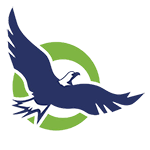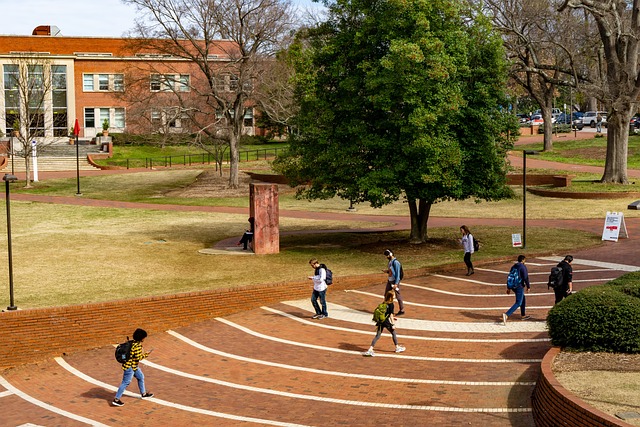Read the detailed description of Quest's Program Details!
As our communities start to open back up after sheltering-in, I wanted to focus this newsletter on how to support children with social and learning difficulties through this transition. I know that many of you may have different viewpoints and feelings regarding sheltering-in and how things are opening back up at this time. I wanted to write something that would be timely and reflect that many of you might be in slightly different places. As always, use and adapt these strategies as necessary to best fit for your family and needs.
Interacting in public provides a different context and expectations than it did prior to March—Right now quite simply the rules are different. In the few places I have gone in recent weeks, there are multiple changes from expectations to enter the space, signs posted of behavior expectations, new rules, markings on the floor regarding where it is appropriate/expected to stand, to name just a few changes.
Brenda Smith Myles, Ph.D. is the second most published researcher in the field of autism and has been a key person in the field regarding describing “the hidden curriculum” and its importance. In addition, Michelle Garcia Winner’s work as a speech pathologist has been a feature in many newsletters already since her work in the area of “hidden rules,” social thinking and researching what actually makes social skills programs effective or not effective has had a tremendous positive impact on our Quest program. These two have been pioneers in the field regarding the “hidden curriculum” or “hidden rules” and social thinking and I have seen the best generalization for our kids at Quest when we are teaching and reinforcing these concepts in creative ways.
“The ‘hidden curriculum’ refers to the set of rules or guidelines that are often not directly taught but are assumed to be known (Garnett, 1984; Hemmings, 2000; Jackson, 1968; Kanpol, 1989). The hidden curriculum contains items that impact social interactions, school performance, and sometimes safety. The hidden curriculum also includes idioms, metaphors, and slang – things most people ‘just pick up’ or learn through observation or subtle cues, including body language. (Myles, Trautman, & Schelvan, 2004, p.5)” [1]
“Social thinking and appropriate social actions help us navigate a world shared by other people-people with differing thoughts, motives, beliefs, desires, and perceptions…Seemingly simple social skills are, in reality, quite complex networks of interdependent thoughts and actions, supported by an equally complex organizational structure. Once again, this structure develops without effort or concrete teaching in the neurotypical child; it’s a normal part of the child’s social development. Not so for the child with social challenges, and without a structure that helps the child organize and make sense of social learning, the child drifts even further without this innate compass to guide his thoughts and actions (pp.3-5).” [2]. “It is not enough for an individual to have social knowledge. The student or adult must be able to systematically coordinate prior social knowledge within the context of the current situation, reading both verbal and nonverbal cues from the environment and people within it-whether or not verbal conversation is taking place (p.5).” [3]
Given that many children with social and learning difficulties struggle with understanding the hidden rules/curriculum and social context, it will be crucial for this group of children to receive further teaching and support to be able to successfully re-enter places like schools, sports, and community areas since the expectations and rules will be different at a variety of points.
What kids with social and learning struggles will likely benefit from as sheltering in is decreased:
- Clear expectations when entering into an environment such as a restaurant, store, playground, school, etc.
- Front loading and priming
- Visuals
- Rewards for meeting expectations
- Consistent reviews of items 1-4 (our kids need consistent practice and repetition to get a new skill and incorporate it consistently). These things will be important because doing things like washing their hands, keeping hands away from their face, giving others personal space, following directions the first time regarding safety regulations will be of higher importance. I think of this like how we would teach kids to cross the street in a parking lot versus how to follow all the rules of a boardgame for example. The risks when you miss a rule in a boardgame are small, but missing a rule in a parking lot can have serious consequences so the supports, training, teaching and supervision we build in are much higher to make sure children are successful and safe.
Often it is incredibly helpful to teach small sections of the sequence and then reward and reinforce this section multiple times before moving on. For our crossing the street example this could mean we break up the sequence of street crossing and practice each part prior to actually crossing a street. For instance, we practice the different steps, (walk up to a cross walk, push the signaling button, read the signaling button for when it is safe to walk, look both ways, cross quickly in the crosswalk while holding hands). Many of these parts of the sequence could be practiced repeatedly at home through talking, signs, with videos, etc.
An example of how to prepare your child to re-enter into a context in which the rules have changed could be: prior to unloading yourself and your child out of the car at a restaurant that you have dined at for years, but has new rules, you:
- Get your child’s attention
- Give clear directions that are concise, but clear about what is going to happen. This might also include a visual with a drawing on a whiteboard of 4 to 15 words. An example might be, “Right now we are going to get out of the car. The expectation are that: 1. We will enter the restaurant together, 2. You will stay right next to me the whole time we are inside. 3. We will only walk to where the waiter tells us to sit and stay seated during the meal. and 4. We will listen first time to any special directions given to us by restaurant staff. You can earn _____ if you do this while we are out of the car. The whiteboard for this might have the words: walk together, stay together, listen, follow directions, stay seated, leave together, BONUS!
- You will likely need to do some variation of this each time you go out into a space, even if you have been there before for a period of time, until your child demonstrates through behavior that they have successfully learned the new social context.
- Another tip would be that you could go in and take pictures or film some of the changes prior to your child entering into the space. This is a variation on frontloading so that they will know more of what to expect. You can then show them the specific signs and rule changes in place for things like your favorite restaurant, school classroom for the upcoming year, etc.
Consistent with teaching hidden rules and a new social context it will likely be important to teach how others think and feel about both positive and negative behaviors. Michelle Garcia Winner lays out great language for this related to a formula for expected versus unexpected behavior. “When you ___________(list expected behavior), I feel (happy, proud, etc.)“ You can also replace this with things like the waiter/grocery clerk/teacher/friend, etc. likely felt…. The same set up is true for unexpected behaviors. “When you ___________(list unexpected behavior), I feel (sad, disappointed, nervous, uncomfortable, etc.)”. [4] Kids will need to know how a variety of behaviors in public are likely impacting others such as demonstrating appropriate or inappropriate hygiene, following new safety rules, social distance, etc. Kids with social and learning difficulties won’t naturally connect how something like personal space or touching stuff after licking their fingers might receive a much different or higher reaction than it did previously without solid teaching including instruction, role modeling, practice, bonuses and review or progress.
When thinking of how kids miss the hidden curriculum or the social context I always think of what it is like to travel in a foreign country where you don’t know the language or the currency and you are in the subway terminal trying to pick the right train to board after paying. The more we can act as a translator and guide for our kids the better. Our kids will pick up the language and what the currency is and also how to navigate the subway system, but the more that we can streamline this process and understand the parts that are going to be confusing given the language/cultural barriers the more helpful we can be to our kids.
1] Endow, J., Learning the hidden curriculum: The odyssey of one autistic adult. (2012) AAPC publishing.
[2-3] Winner, M. G. (2008). A politically incorrect look at evidence-based practices and teaching social skills: A literature review and discussion. Think Social Publishing, Inc. San Jose, CA.
[4] Winner, M.G. (2010) Sticker Strategies: Practical strategies to encourage social thinking and organization

